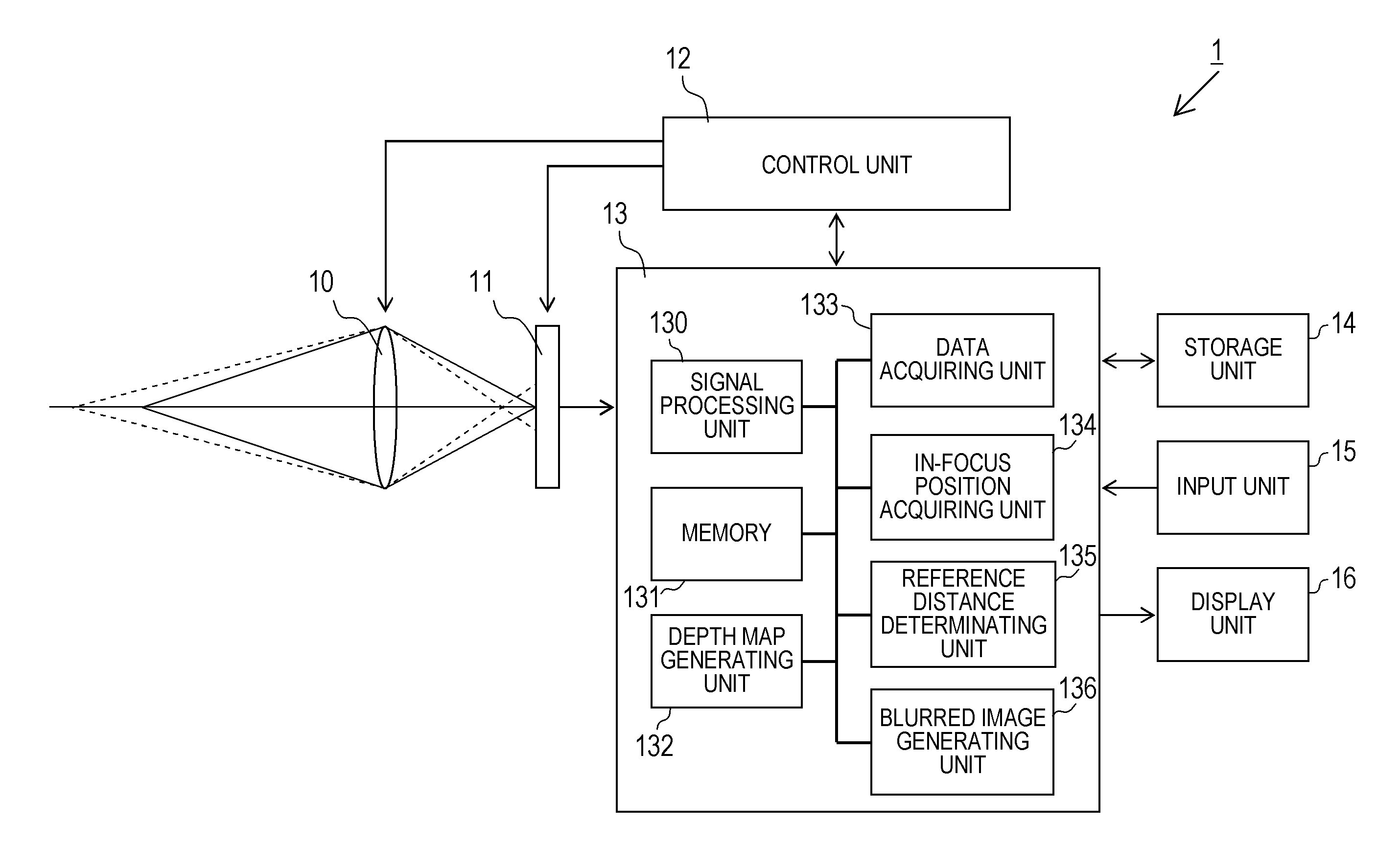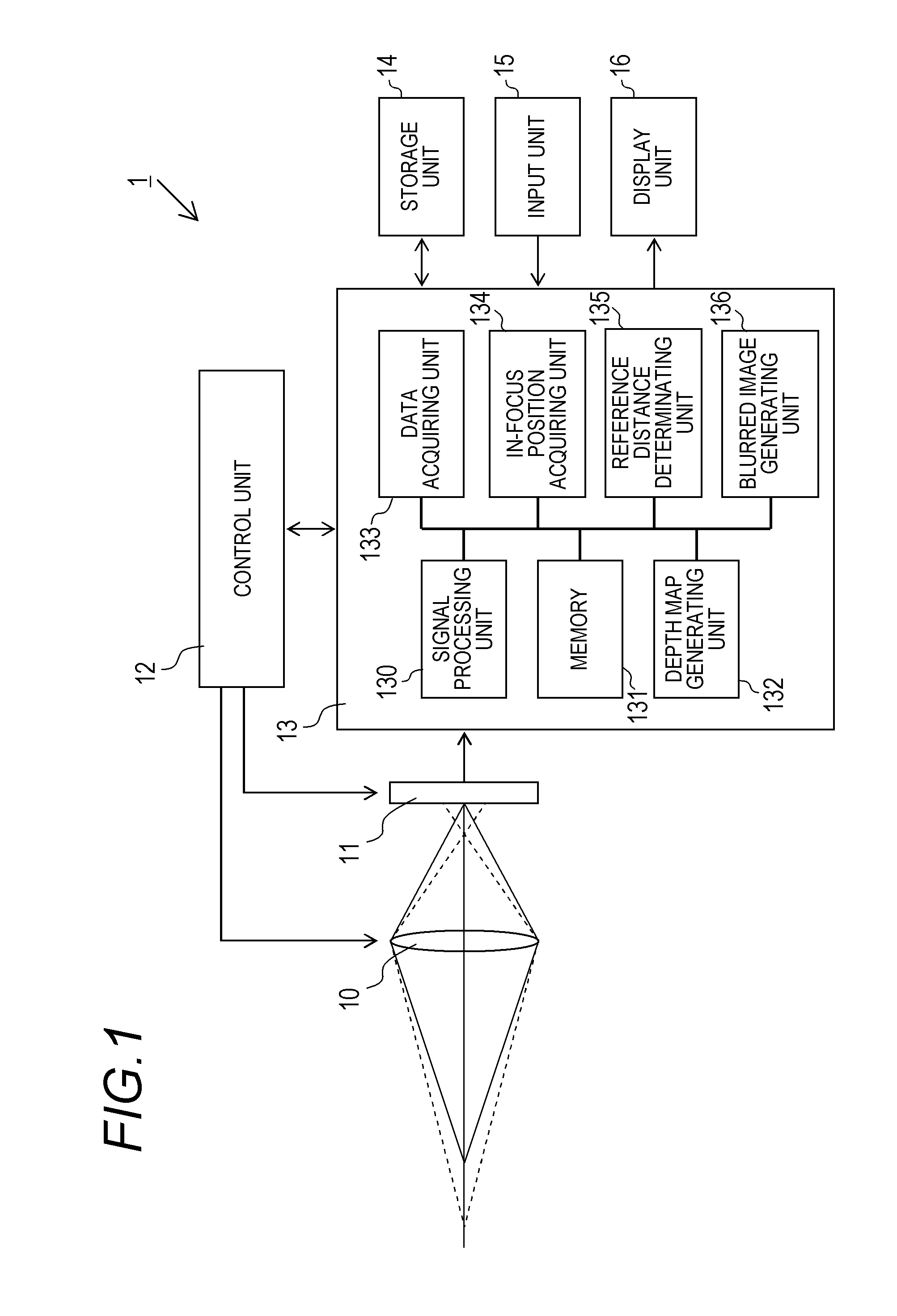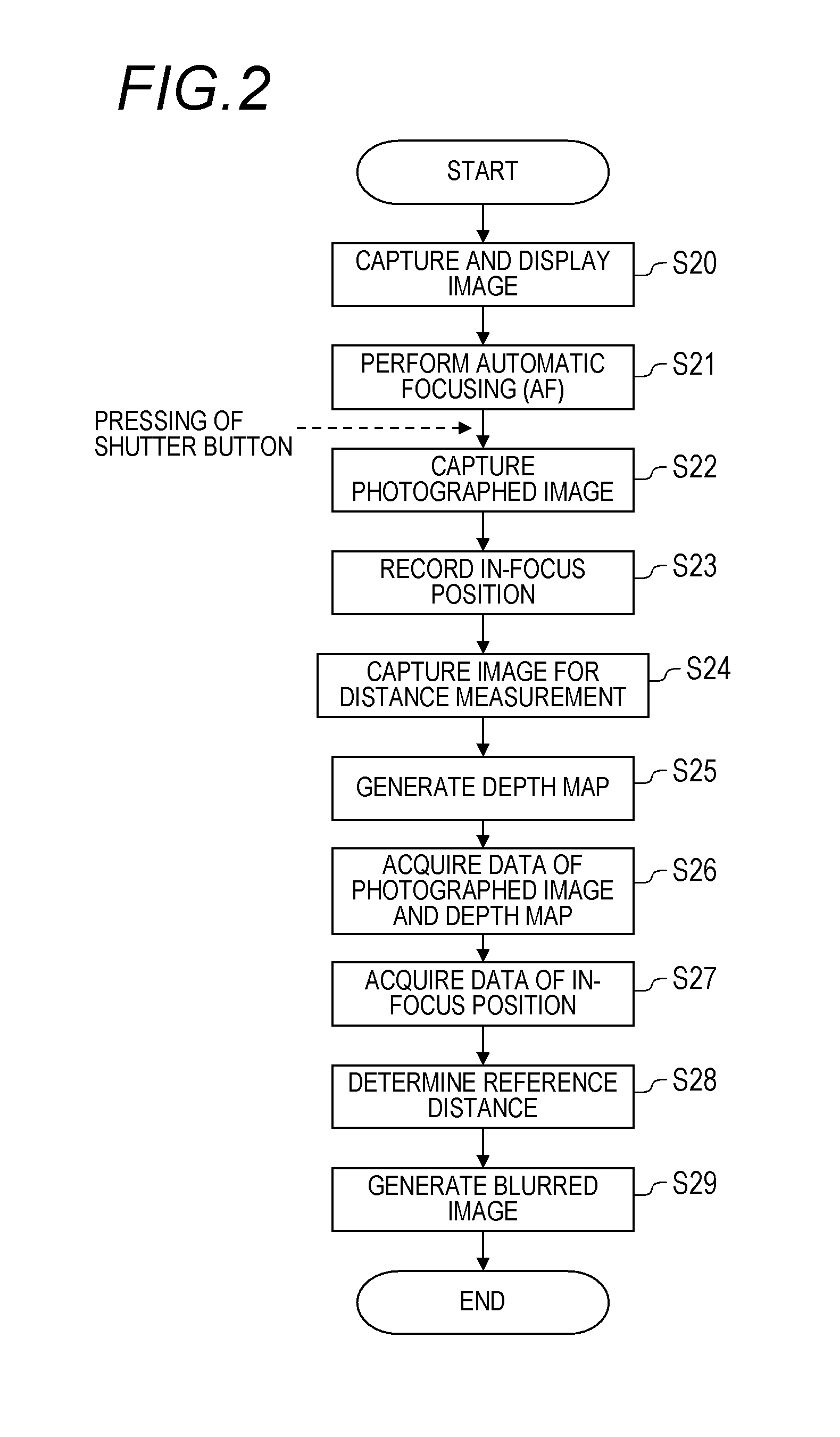Image processing apparatus and image pickup apparatus
- Summary
- Abstract
- Description
- Claims
- Application Information
AI Technical Summary
Benefits of technology
Problems solved by technology
Method used
Image
Examples
first embodiment
Configuration of Image Pickup Apparatus
[0029]FIG. 1 is a diagram schematically showing a configuration of an image pickup apparatus according to a first embodiment of the present invention. An image pickup apparatus 1 includes an imaging optical system 10, an imaging element 11, a control unit 12, an image processing apparatus 13, a storage unit 14, an input unit 15, and a display unit 16.
[0030]The imaging optical system 10 is an optical system which is constituted by a plurality of lenses and which enables incident light to form an image on an imaging plane of the imaging element 11. A variable focus optical system is used as the imaging optical system 10, and thus automatic focusing can be performed by an autofocus function of the control unit 12. The autofocusing may adopt a passive system or an active system. The imaging element 11 is an imaging element including an image sensor such as a CCD or a CMOS. Alternatively, an imaging element having a color filter, a monochromatic ima...
second embodiment
[0049]Next, a second embodiment of the present invention will be described. While a coordinate of a range-finding point of autofocus is used as an in-focus position in the first embodiment, this method is problematic when performing focus-locked photography. Focus-locked photography refers to a technique in autofocus which involves performing photography by shifting a composition while keeping a focal position fixed. For example, by bringing a subject at the center of a screen into focus by automatic focusing and subsequently turning the camera to the right while half-pressing a shutter button, photography can be performed in a composition where the subject is positioned at a left end of the screen while keeping the distance of the subject in focus. In this case, since a coordinate of a range-finding point (the center of the screen) and a coordinate of an in-focus region (the left end of the screen) do not match, referencing the depth map based on the coordinate of the range-finding...
third embodiment
[0054]Next, a third embodiment of the present invention will be described. In the first and second embodiments, an in-focus position is acquired from autofocus information at the time of photography. In contrast, in the third embodiment, a prescribed object is detected from a photographed image and the detected position is assumed to be an in-focus position. The prescribed object may be any object as long as there is a high probability of the object being selected by the user as a subject. For example, a face, a half body, or a full body of a person is envisioned. This is because a face or a half body of a person is almost always brought into focus when photographing a portrait or taking a group photograph. The present embodiment utilizes this tendency. Hereinafter, an example of detecting a face of a person will be described.
[0055]The third embodiment differs from the first embodiment in the operations of the in-focus position acquiring unit 134. Specifically, the in-focus position...
PUM
 Login to View More
Login to View More Abstract
Description
Claims
Application Information
 Login to View More
Login to View More - R&D
- Intellectual Property
- Life Sciences
- Materials
- Tech Scout
- Unparalleled Data Quality
- Higher Quality Content
- 60% Fewer Hallucinations
Browse by: Latest US Patents, China's latest patents, Technical Efficacy Thesaurus, Application Domain, Technology Topic, Popular Technical Reports.
© 2025 PatSnap. All rights reserved.Legal|Privacy policy|Modern Slavery Act Transparency Statement|Sitemap|About US| Contact US: help@patsnap.com



